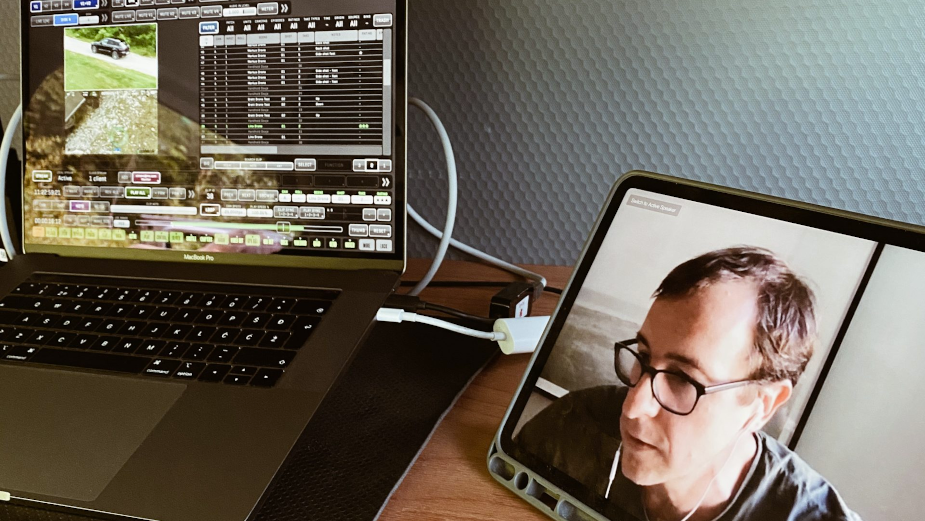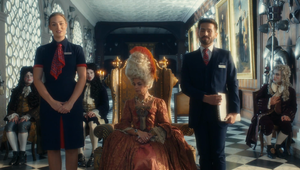
18 Lessons Bang TV Learned from Remote Shooting

Remote shooting is the immediate future for a lot of production right now. The fewer people that travel, the lower the risks of virus transmission and disruption to shooting. The recent spikes in Beijing show that we aren’t on a smooth and gradual path back to global normality, so planning international travel is going to remain risky for some time yet.
But we are all going to have to get the hang of remote shooting really quickly because not understanding the processes will swiftly expose lack of experience and knowledge.
Bang TV's Tom Whitehead reflects on what the team have learnt from remote shooting.
Comms
Today it’s essential to understand communication technology and how to use it effectively to replace planes, taxis, hotels and endless hours in unit vans. If you are the director, the ECD or the attending client, the important stuff is still happening in the frame of your monitor. That’s true whether you are in a studio, on location or in the passenger seat of a tracking vehicle. If your monitor can be in your office or your beautiful riverside home, why spend a week sweating or shivering in an E-Z-Up by a roadside after a dawn call and a three hour drive to the location?
Robust comms links and an appreciation of the bandwidth demand on your locations and in your own situation will be key. There will be slow-internet periods during the day when the whole country logs on to check their Instagram during lunch. Understand these patterns and schedule accordingly. Check the comms. Check them again. Check them the day before, first thing on the day of the shoot and keep on top of them throughout the day.
Producers should work hand-in-hand with agency producers to establish how many communication loops are needed and where they need to intersect. Have a moderator for the Zoom chatroom: one person to monitor who’s on mute, who isn’t and who should be. They’ll need to make sure the client and the agency can follow the action and ensure they know how and when to give feedback. Keeping the paying punters actively engaged will be even more important if there are no opportunities for relationship-building on location.
Prep
Thorough prep is totally indispensable to an effective remote shoot. directors and producers have to be on top of the detail more than before. There’s much less room for winging it 'on the day' if you aren’t going to be there on the day. On a remote shoot in San Francisco we learned that non-professional interviewees need the most basic guidance on where to place the camera that was shipped to them, where to sit for lighting and how to check the background behind them.
A director’s clear, quick communication skills will be as important as adding creative value. They will have to be all over the tech specs of the equipment at their disposal and the technical terminology needed to operate it so an experienced producer will be crucial. Casting, scouting, technical recces and rehearsal time can be done with remote resources if you know what you’re doing.
Push for a BTS camera in the budget and link it into the comms platform. It will give everyone a chance to get a perspective on the set and will definitely make everyone feel closer to the action and more involved, even if they are still in their slippers.
Direction
One downside is that non-verbal communication is easier to lose on Zoom. Hand gestures used to describe a required movement are much harder to understand backwards, on a 2D screen, than in the flesh. Over time we will develop new common language tools to avoid waving our hands around to a sea of blank faces.
But on the upside a director can effectively be in two or three places at once. On our test shoot in Slovenia and Croatia, the three units were 181 kms apart. Moving between them would be a three hour unit move – if you get lucky with the traffic and the border crossing. Far easier simply to switch the digital video assist from the Russian Arm to a live feed from the Drone Unit which was already in place. With careful and meticulous planning, location shoots can spend more time turning over and less time on the road.
But the critical factor in successful remote shooting will be having strong, well established relationships with overseas partners. Experienced producers have a professional shorthand which saves hours. There’s a huge amount of trust needed if you aren’t going to be on the ground yourself so use production teams that have worked together before.
For Clients facing ever increasing demands on their working time, and constant downward pressure on their budgets, shooting remotely is likely to be a very welcome development. Ultimately, if you ask any director they will tell you that remote shooting won’t ever be as good as being on set. But it’s a hell of a lot better than not working at all.













